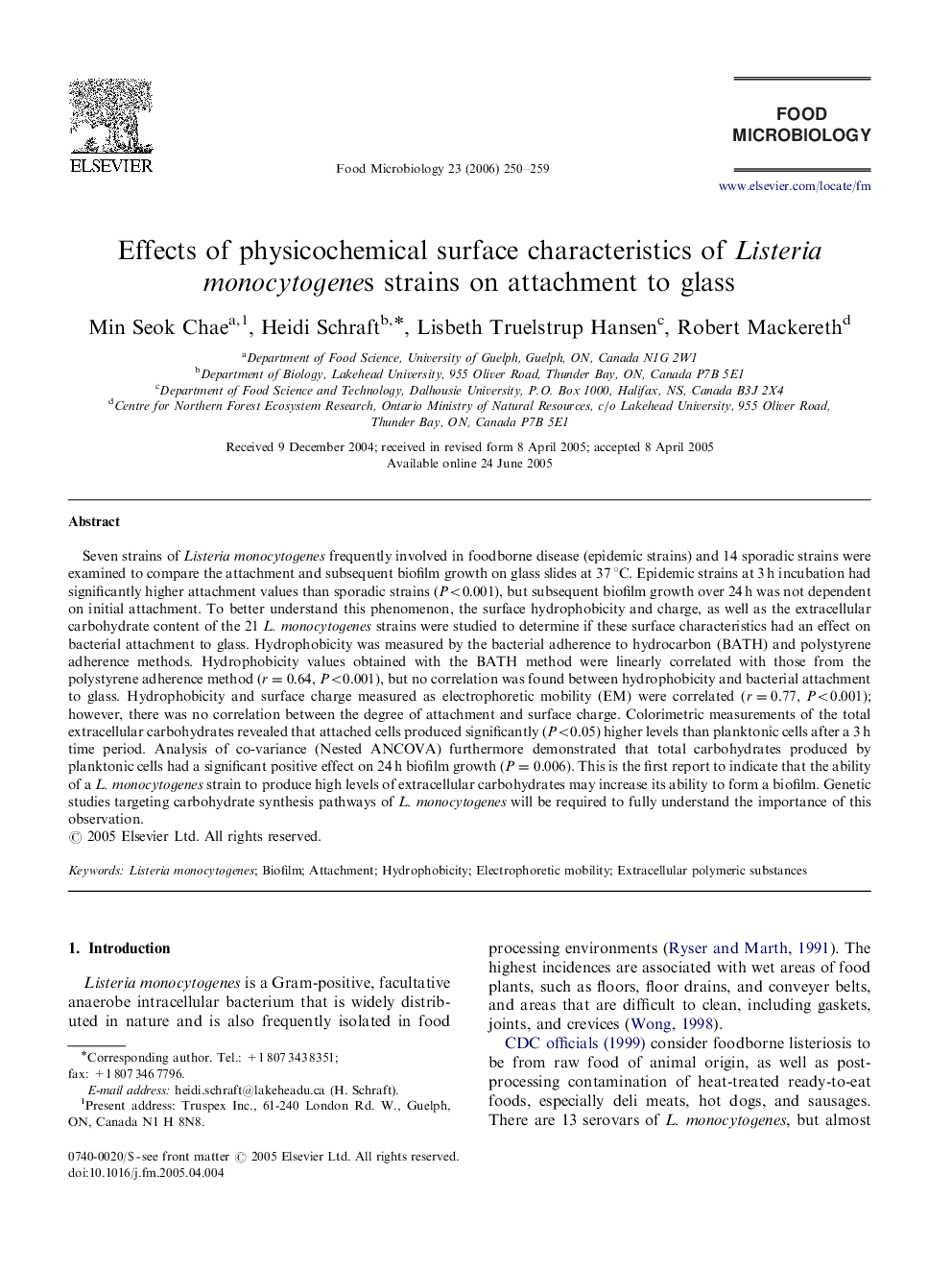| Article ID | Journal | Published Year | Pages | File Type |
|---|---|---|---|---|
| 4364007 | Food Microbiology | 2006 | 10 Pages |
Seven strains of Listeria monocytogenes frequently involved in foodborne disease (epidemic strains) and 14 sporadic strains were examined to compare the attachment and subsequent biofilm growth on glass slides at 37 °C. Epidemic strains at 3 h incubation had significantly higher attachment values than sporadic strains (P<0.001P<0.001), but subsequent biofilm growth over 24 h was not dependent on initial attachment. To better understand this phenomenon, the surface hydrophobicity and charge, as well as the extracellular carbohydrate content of the 21 L. monocytogenes strains were studied to determine if these surface characteristics had an effect on bacterial attachment to glass. Hydrophobicity was measured by the bacterial adherence to hydrocarbon (BATH) and polystyrene adherence methods. Hydrophobicity values obtained with the BATH method were linearly correlated with those from the polystyrene adherence method (r=0.64r=0.64, P<0.001P<0.001), but no correlation was found between hydrophobicity and bacterial attachment to glass. Hydrophobicity and surface charge measured as electrophoretic mobility (EM) were correlated (r=0.77r=0.77, P<0.001P<0.001); however, there was no correlation between the degree of attachment and surface charge. Colorimetric measurements of the total extracellular carbohydrates revealed that attached cells produced significantly (P<0.05P<0.05) higher levels than planktonic cells after a 3 h time period. Analysis of co-variance (Nested ANCOVA) furthermore demonstrated that total carbohydrates produced by planktonic cells had a significant positive effect on 24 h biofilm growth (P=0.006P=0.006). This is the first report to indicate that the ability of a L. monocytogenes strain to produce high levels of extracellular carbohydrates may increase its ability to form a biofilm. Genetic studies targeting carbohydrate synthesis pathways of L. monocytogenes will be required to fully understand the importance of this observation.
